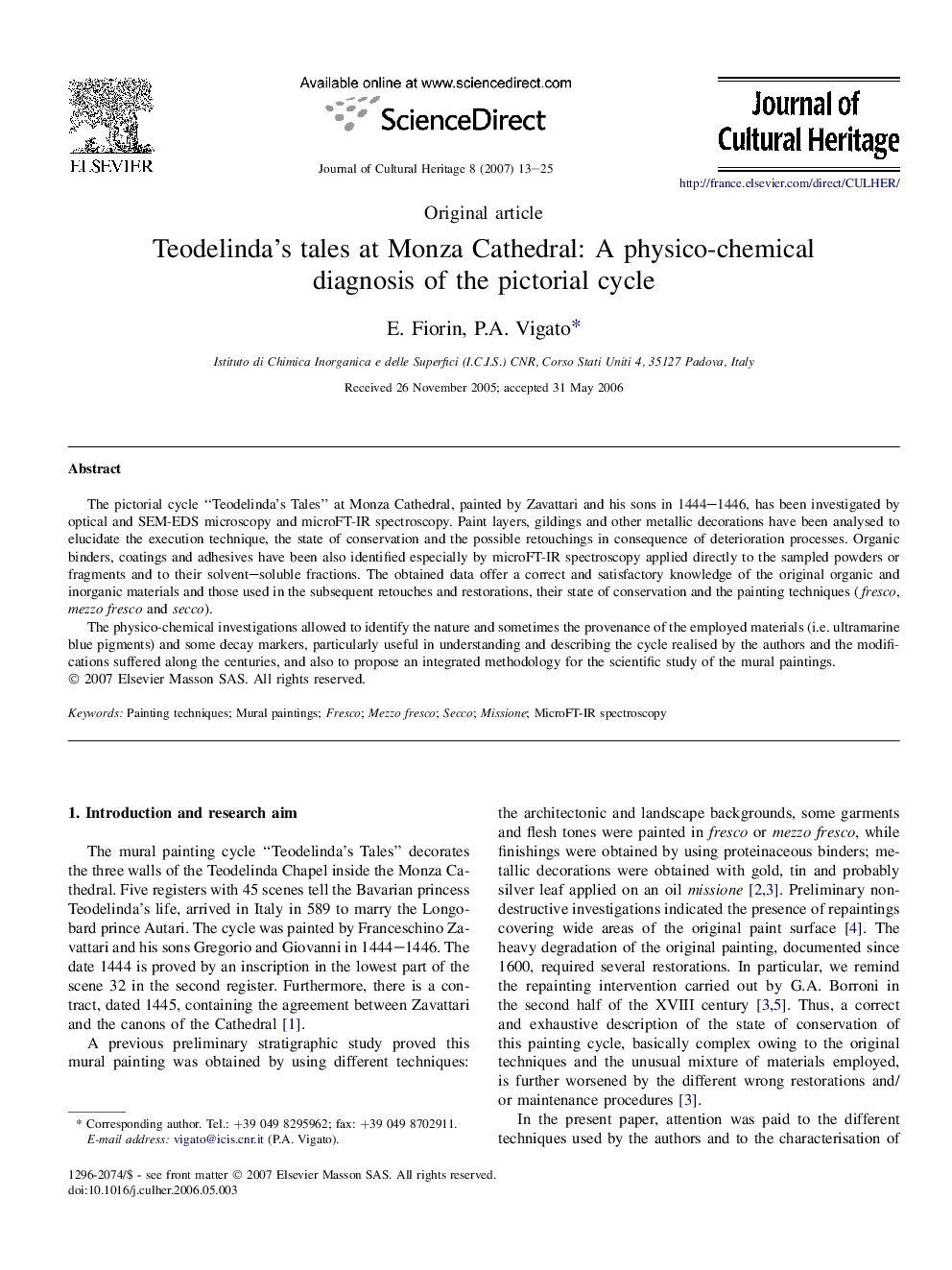| Article ID | Journal | Published Year | Pages | File Type |
|---|---|---|---|---|
| 1038843 | Journal of Cultural Heritage | 2007 | 13 Pages |
The pictorial cycle “Teodelinda's Tales” at Monza Cathedral, painted by Zavattari and his sons in 1444–1446, has been investigated by optical and SEM-EDS microscopy and microFT-IR spectroscopy. Paint layers, gildings and other metallic decorations have been analysed to elucidate the execution technique, the state of conservation and the possible retouchings in consequence of deterioration processes. Organic binders, coatings and adhesives have been also identified especially by microFT-IR spectroscopy applied directly to the sampled powders or fragments and to their solvent–soluble fractions. The obtained data offer a correct and satisfactory knowledge of the original organic and inorganic materials and those used in the subsequent retouches and restorations, their state of conservation and the painting techniques (fresco, mezzo fresco and secco).The physico-chemical investigations allowed to identify the nature and sometimes the provenance of the employed materials (i.e. ultramarine blue pigments) and some decay markers, particularly useful in understanding and describing the cycle realised by the authors and the modifications suffered along the centuries, and also to propose an integrated methodology for the scientific study of the mural paintings.
